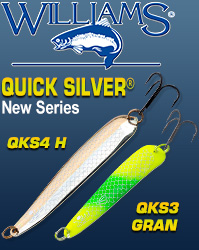Pine Lake fish kill attributed to fish stress and fungal infection
VILLAGE OF CHENEQUA, Wis. -- Rapidly warming water temperatures, the stress of spring spawning and a resulting fungal infection have contributed to a fish die off in Waukesha County's Pine Lake.
The lake is a popular destination for anglers and boaters, who along with community residents have voiced concern over the die off, which started in mid-April. Wisconsin Department of Natural Resources fisheries biologists collected and processed samples from the dead and dying fish, many of which appear lethargic with areas of reddened skin and patches of fungus.
Lab tests confirmed the presence of the fungus Saprolegnia, which appears as white or gray cottony patches and contributes to mortality in already weakened fish. The lab results revealed no significant viral pathogens although some of the fish had mixed bacterial growth of Shewanella and Aeromonas sobria. Both types of bacteria are normally found in freshwater and are opportunistic pathogens of fish.
The most heavily infected species include black crappies, largemouth bass, rock bass and bluegills, with the greatest mortality appearing among the crappies, said Ben Heussner, DNR fisheries biologist in Waukesha County. A survey of the lake indicated that northern pike, walleye and smallmouth bass have not been affected and continue to show healthy size structure and abundance.
"During the winter months, fish do not feed regularly and by spring, their fat stores often have been severely depleted," Heussner said. "As their metabolism increases and spawning activities begin, they are more prone to additional stress, which may come from changing water temperatures. The result is that they are more vulnerable to secondary bacterial and fungal infections."
Although the fungal and bacterial infections identified in the lab results are not harmful to humans, DNR encourages anglers to select only healthy fish and healthy tissue for cooking and eating. Fish that appear normal are safe to eat so long as they are properly cooked. Anglers are advised as always to thoroughly cook fish and follow safe eating guidelines found on the "Eating Your Catch" webpage." Do not eat fish that are found dead, decomposing or that appear sick. Wash hands after handling fish especially if they are dead or appear diseased.
Heussner said the die off may continue for another week or two before affected populations adjust to the changing conditions. DNR will continue to monitor the situation and consider stocking adjustments if warranted.
Since dead fish along shorelines may become a host for bacteria or attract other pests, the best action for lakefront property owners is to bury the fish under at least 8 inches of dirt away from the water. Or, homeowners may put the fish in a heavy duty plastic bag and dispose of it with trash that goes to the landfill. Local municipalities may have other requirements for maximum weight or bagging and it's best to check with local waste handlers for requirements specific to a location. It is a good idea to wear protective gloves when handling dead fish.
For more information on the local fishery, visit dnr.wi.gov and search for "Pine Lake."









